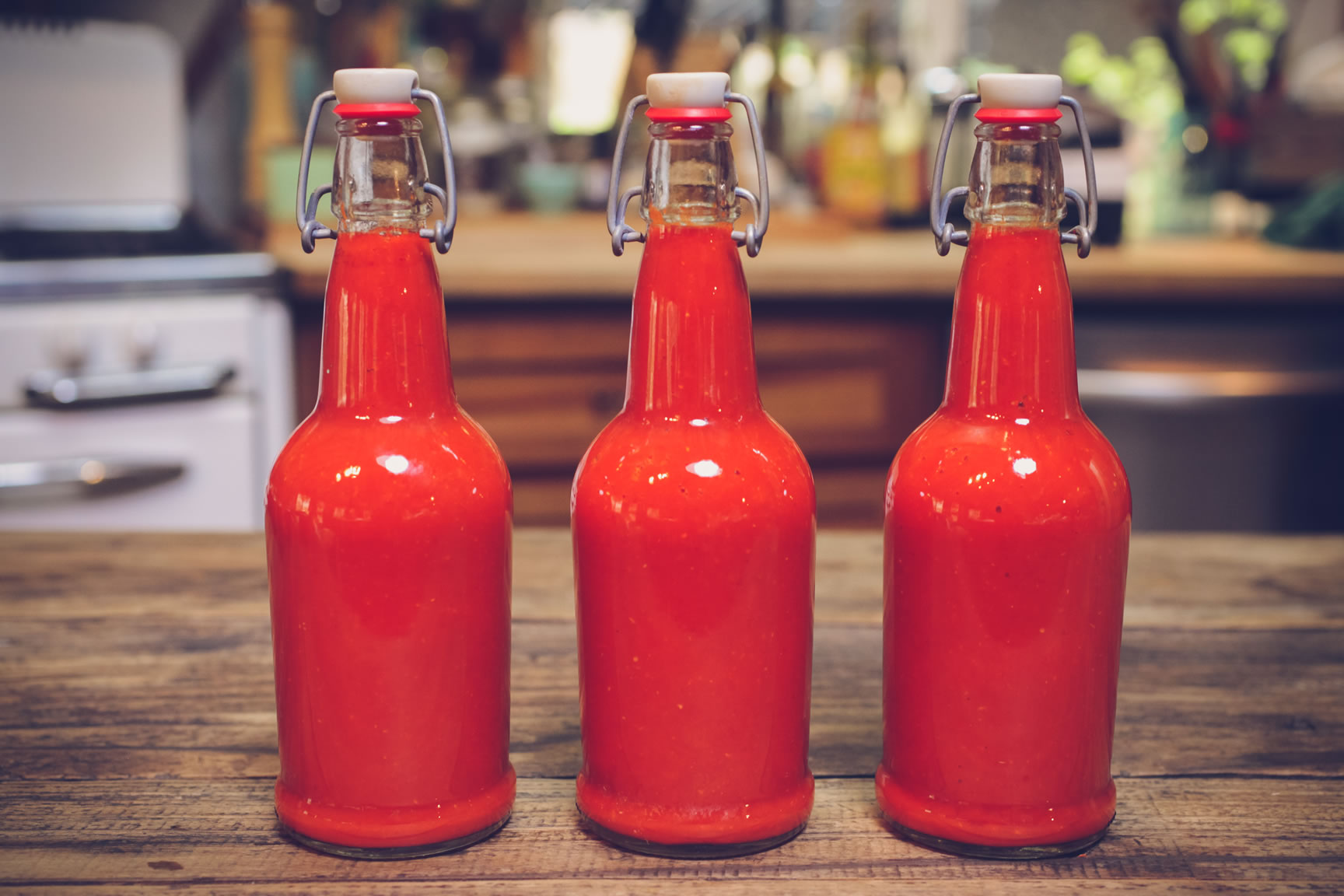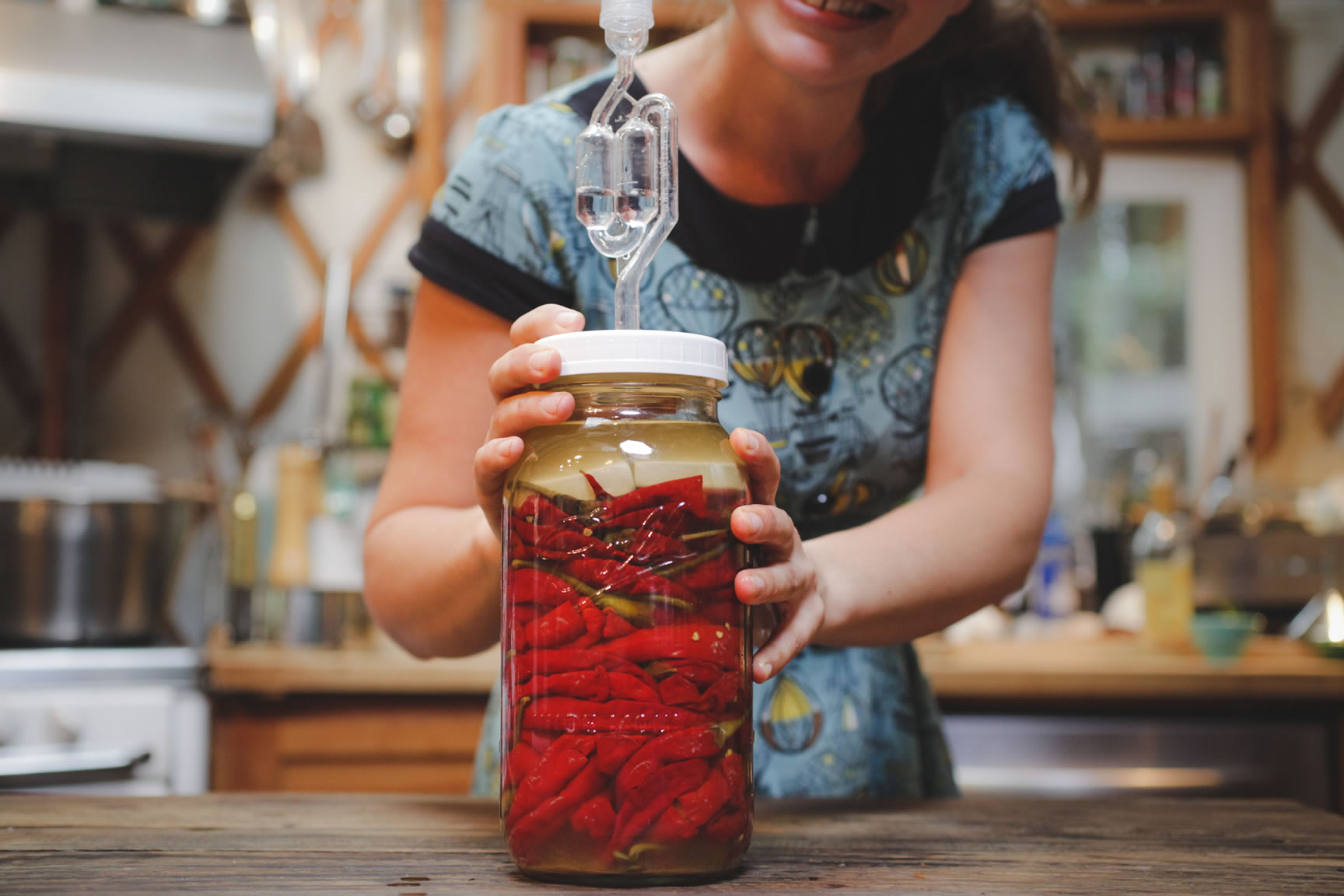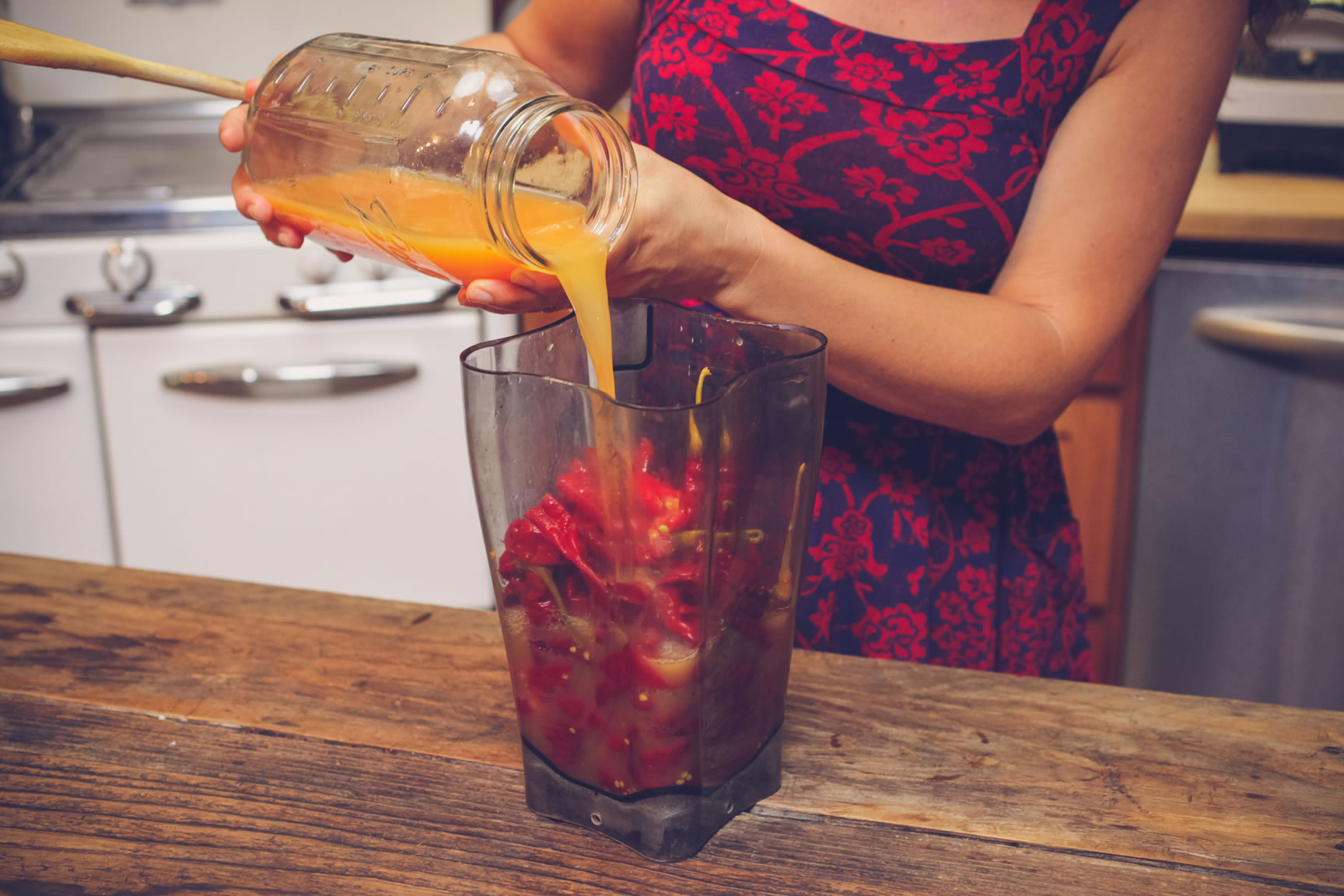- Continue Shopping
- Your Cart is Empty
Fermented Hot Sauce Recipe

What You'll Need
Equipment:
Ingredients:
- 8 cups hot peppers, such as red or green Jalapeno, Serrano, Habonero, or Cayenne peppers
- 1/4 cup sea salt
- 1 quart cool, un-chlorinated water
- Optional: 1/4 yellow onion, or up to 6 garlic cloves
- Optional: Apple Cider Vinegar, at the time of blending
Oh, beware.
Beware not the fiery bite of the fermented pepper (though it may be fierce!); no, beware the compulsion that may seize you, once you’ve tasted this sauce, to gather peppers by the crate, ferment them by the gallon, blend them and shake them over every meal you eat for the next 11 months. That’s what has happened to many of us here (see our article from last year, Hot Saucy.) As you can imagine, there are many ways to personalize a recipe as simple as this. Feel free to tinker with it, as you are moved to do.
Here is the most basic recipe for fermented Hot sauce. Some ideas for variations include: Adding a quarter of an onion to the batch, or replacing a few jalapenos with a bell pepper, to temper the fiery heat, while keeping the fermented tang. Of course, you can use peppers other than jalapenos, too, but the thinnest peppers may require the addition of another pepper to the mix, in order to have enough sugars for the bacteria to digest.
Makes 1 quart of finished hot sauce, but it can be scaled up infinitely.
Directions
1) Prep your peppers
Select fresh, unblemished peppers, and wash them.
Slice the peppers lengthwise.
2) Pack your jar
Pack the pepper slices into a half gallon mason jar. (They float if left whole.) Add a few garlic cloves, and a quarter of an onion, if desired, leaving 1” of headspace from the top of the jar. Layer larger peppers across the top of the jar, as a sort of dam to prevent the other peppers from floating above the brine.)3) Make your brine and cover peppers
Dissolve the 1/4 cup salt into 1 quart pure, un-chlorinated water, and pour over the pepper mixture.Secure the peppers beneath the brine with a weight.

4) Secure your fermentation lid and ferment
Affix a fermentation lid to the jar top, and set in a cool place, out of direct sunlight, to ferment.
Culture at room temperature until the color of the peppers changes and dulls, usually 5-7 days. If you like, this ferment continue to ferment at room temperature for many months. We like it best after at least 3 months; the flavors become more complex and rich, the longer it ferments.
Check the peppers periodically to make sure that the airlock is secure. We like to make this ferment in half gallon jars, and blend up the peppers into sauce one half-gallon at a time. This way, some of them ferment for only a month, while others bubble along for 6 months or more. After a few months, however, there is not much fermentation activity, as most of the sugars have been digested, and the ferment is at something of a standstill.

If any white yeast forms on the surface, as shown here, skim it off, and continue fermenting, as needed. This is the (relatively) harmless kahm yeast, which can affect flavor, but does not generally have any negative effects other that a slight yeastiness in flavor, and a softening of the texture. Catching it early on, before the yeast multiplies and works its way deeper into the ferment, is easily done. Please note, however, that even this mild yeast can have adverse effects for those who are prone to yeast imbalances, such as overgrowth of Candida, in their bodies. Those individuals should take especial care to avoid ingesting ferments that are contaminated with yeast overgrowth.
5) After a good long ferment, blend smooth
When the peppers have fermented for the desired length of time, it is time to turn them into sauce!Place the peppers in a blender, reserving the brine.

Blend until smooth, adding more brine if desired, to make a thinner sauce.

Apple cider vinegar may also be added, to taste. Adding ACV will increase the acidity of the ferment, making it more shelf stable; however, it must still be stored in the fridge.
6) Bottle and store
Using a funnel, pour the finished sauce into airtight bottles.
Once bottled, store this sauce in the refrigerator, where it will keep for months.
Enjoy it with chips, over eggs or tacos, or as an ingredient in any dish that calls for a splash of delicious peppery fire!
Over to You
It’s part of our mission here at Mountain Feed to help you make delicious, sustainable, homemade food more often. Stop by and say hello on Facebook, Twitter, Instagram or Pinterest. Or, as always, you can do it the old fashioned way and come by the store to speak with one of our in-house experts.
